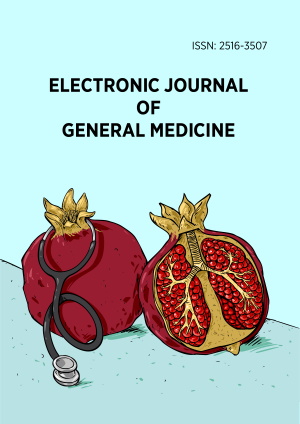Abstract
Background: Obesity is a significant public health concern associated with numerous adverse health outcomes. The development of exercise maintenance habits has yet to be thoroughly studied in Saudi Arabia. The aim of this study was to investigate the impact of promoting physical activity, with a particular focus on habit formation, on body mass index (BMI) and body fat (BF) percentage as well as healthy behavior parameters among the university community in the Eastern Province of Saudi Arabia.
Materials and methods: Volunteer participants (N = 139; age 34.78 ± 10.20 years; weight 85.14 ± 10.04 kg) university students and staff members aged 18-55 who were overweight (BMI 29.70 kg/m2) were distributed into two groups; experimental (n = 74 habit formation with PA intervention 4-sessions-per-week) and control (n = 65 no habit formation 0-1-session-per week). The participants in the experimental group gave a pre-intervention instruction session and were then guided during the 12 weeks.
Results: The main outcomes of the investigation were objective measures, anthropometric parameters (weight, BMI, BF percentage) and healthy behavior parameters (moderate-to-vigorous physical activity [MVPA] minutes, step counts, and weekly leisure activity score) were executed at baseline and after 12 weeks. The experimental group achieved a notable enhancement (p < 0.01) in comparison to controls following 12-weeks period, shown in all anthropometric (weight, BMI, and BF percentage) and healthy behavior (MVPA minutes, step counts, and weekly leisure activity score) parameters.
Conclusion: This study represents the positive impact of regular physical activity interventions, combined with habit formation, on adiposity indicators and the promotion of healthy behaviors within a university setting. University should mandate 3 weekly physical activity hours as part of employment/student contracts and subsidize wearable activity trackers to reinforce habit cues. Future research should replicate this study with extended intervention periods to evaluate the long-term sustainability of the observed improvements in physical activity interventions.
License
This is an open access article distributed under the Creative Commons Attribution License which permits unrestricted use, distribution, and reproduction in any medium, provided the original work is properly cited.
Article Type: Original Article
ELECTRON J GEN MED, Volume 22, Issue 3, June 2025, Article No: em648
https://doi.org/10.29333/ejgm/16259
Publication date: 01 May 2025
Online publication date: 08 Apr 2025
Article Views: 140
Article Downloads: 99
Open Access References How to cite this article
 Full Text (PDF)
Full Text (PDF)